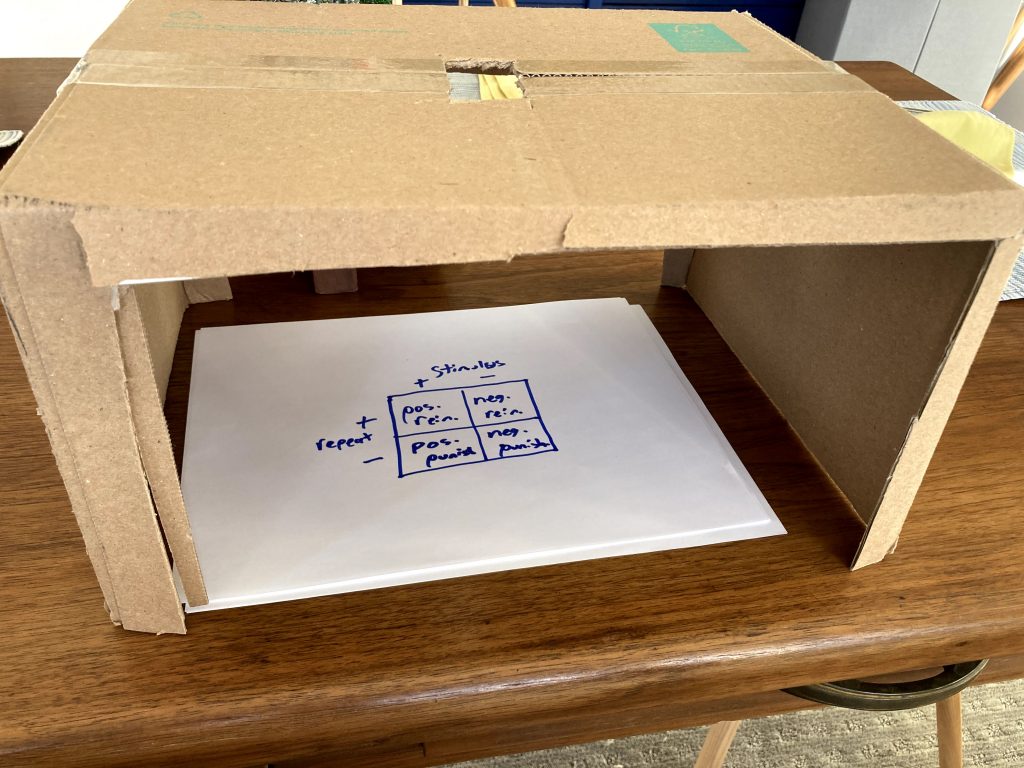I received some feedback about my Dynamic Drawing post recommending that I provide a more fleshed-out example of how I might use the idea in a classroom. Around the same time, a psychology teacher-buddy (hi Winnie!) asked me to make a video for her class. So I decided to combine the projects!
I made this set of slides for my friend: Operant Conditioning diagrams. Here’s how I might use them in a high school psychology class:
- Slide 2 and 3: I want students to know that there are 4 kinds of operant conditioning, and it can be a bit tricky to keep them straight.
- Slide 4: one scheme that can help prevent confusion is to associate the word “positive” with “+” or addition and “negative” with “-” or subtraction If students associate the words positive with “good” and negative with “bad,” that will end up causing them trouble later on.
- Slide 5: students should associate the term “reinforcement” with an organism repeating a response and “punishment” with an organism NOT repeating a response. This will be more helpful than thinking about a reinforcement as a reward (or something “good”). Keeping the focus on whether the response, the behavior, is repeated or not will be important later.
- Slides 6 and 7: these are “dynamic drawing” videos that walk students through simple “sequence” and “matrix” diagrams that can help them figure out examples of operant conditioning. If students can draw these diagrams for themselves on a blank sheet of paper, the diagrams can be useful if they are asked to unpack an operant conditioning example. Modeling how to draw these diagrams might help students learn how to draw them on their own.
- Slides 8 through 11: this is a good opportunity to emphasize that knowing how the organism responds after the stimulus (the “R2” in the sequence diagram) is absolutely essential. If we don’t know how they organism responds, there is no way we can figure out what kind of operant conditioning occurred!
Here’s the video from slide 6 – the sequence diagram:
Here’s the video from slide 7 – the matrix diagram:
My friend said she planned on using these videos with her high school psychology class, so I hope to get some real feedback from students about how useful these videos and diagrams are. By the way, if any of you want to make similar videos, here’s the very complicated “filming rig” I made out of a cardboard box (I put my cellphone on top with the camera pointing down through the hole).

Great article. thanks